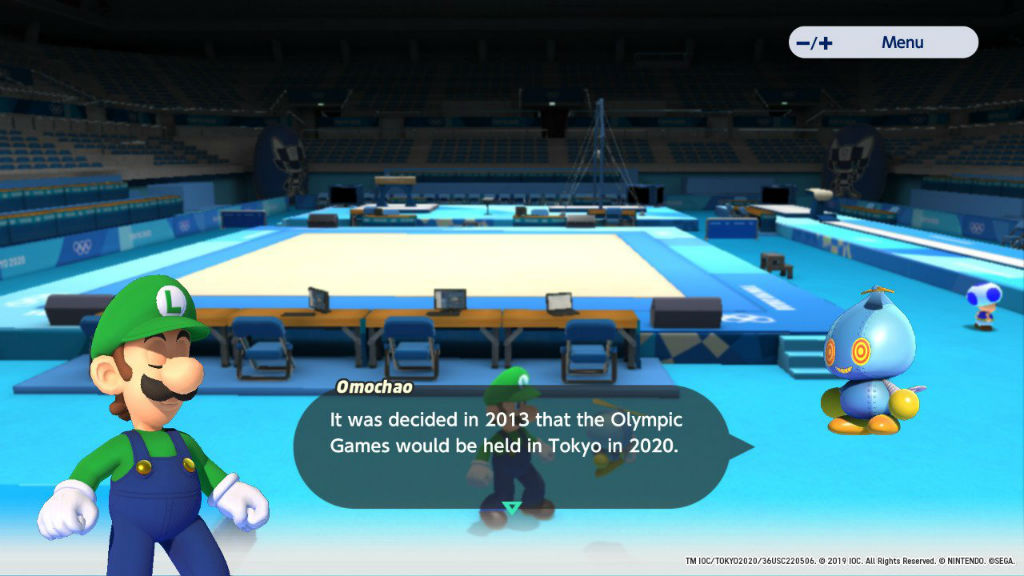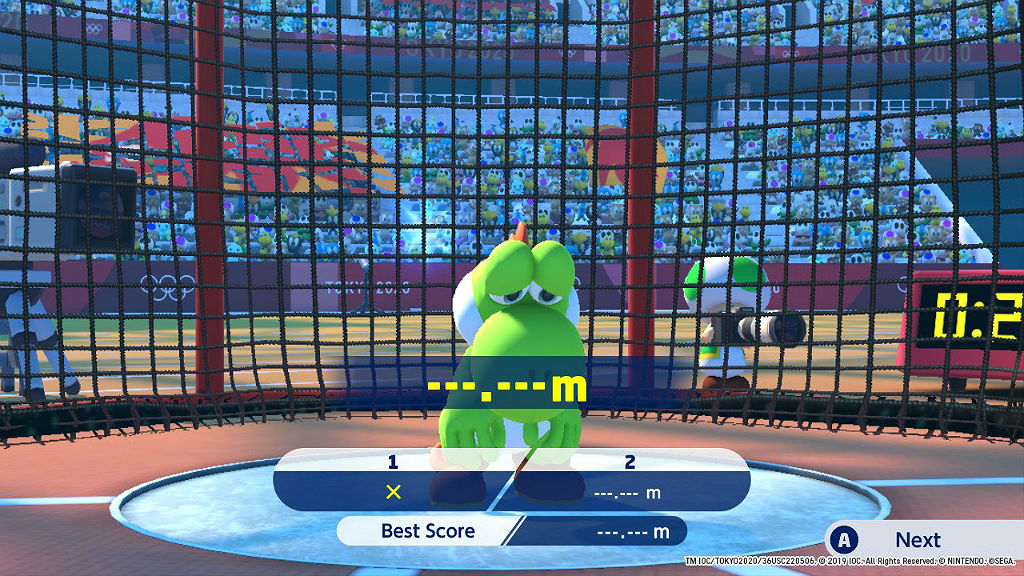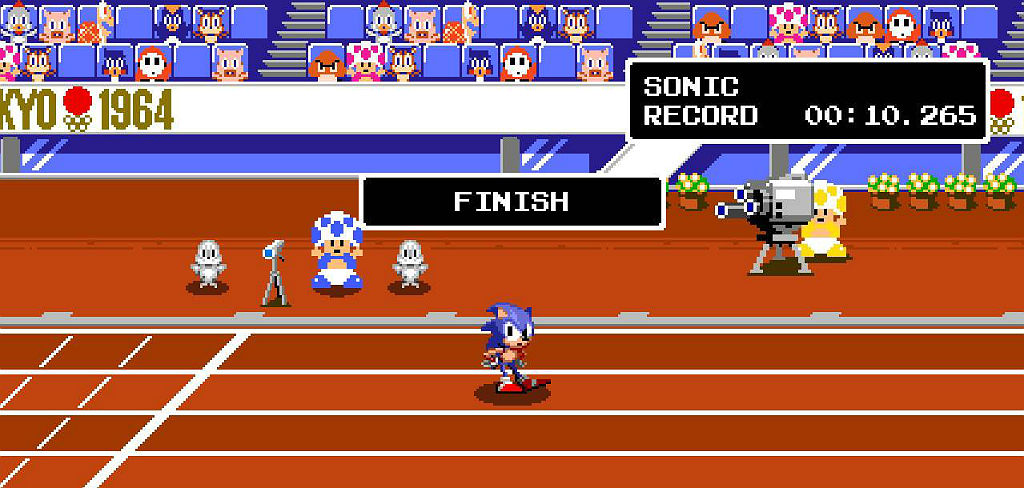It often feels like the official sport of Mario and Sonic at the Olympic Games Tokyo 2020 is pressing A to get past text conversations. The official mascot of the game is the face of disappointment the various Mario and Sonic characters make when you fail to successfully grasp how to play an Olympic event.
None of that is true, but that’s certainly what it feels like when you try out the latest Nintendo ode to international sporting events in digital form. This title, which covers the upcoming 2020 Games in Tokyo, also celebrates the 1964 Olympiad in Tokyo as a way to add some retro flair to the proceedings. But despite the 8-bit events, the title suffers from the same problems many of the Olympic tie-ins have had over the years.
Mario and Sonic is weighed down by a heavy obligation to advertise the Olympic games themselves and the various digitally rendered venues on display. It makes for a story mode cluttered with traveling a digital map of those venues and enduring historical tidbits that quickly become boring. I have not been to Tokyo, but I would assume the story mode also serves as a decent map of the city’s various event sites next summer. It adds another layer of tedium to the whole experience, though, of what’s essentially the longest game tutorial imaginable.
The game’s story mode, which helps you unlock extra characters to use in certain events, is far from mandatory but is a significant part of the game’s various play options. What’s actually in the mode, unfortunately, is a tedious story completely hidden by endless, unskippable dialogue and seconds-long pauses for gesturing and other actions that separate the few things you actually get to do.

Playing each challenge, though, is skippable after three attempts, sending you back to a dozen-plus button presses to get you to the next challenge that’s entirely optional. Struggle with learning how to play half-baked volleyball in a retro environment? If you lose 6-0 three straight times you’ll get a gold medal anyway and you can just move on. The final challenge is something you’ll be very prepared for after impatiently trying to blow past repetitive text boxes: a 100-meter dash that’s basically just pressing A a bunch of times in a row.
It was one of the most frustrating game experiences I’ve ever had, but skipping Story Mode and going right to multiplayer has problems in its own right. Most minigames boil down to a simple race to see who grasps the general concepts of the controls rather than an actual test of skills. Given that I was working through the story mode and (eventually) learned how to play an event or two, I had a significant advantage over my fellow competitors. But it was an aptitude test rather than a gaming experience, and once someone gets the hang of things it’s usually good for one more round before everyone decides to move on to something else.

It’s a problem of the subject matter more than anything — some Olympic sports just aren’t very fun to play in a video game. Eggman looking ridiculous on a horse is a huge selling point, quite frankly, but actually executing an equestrian event on a Switch controller isn’t the ideal gaming experience. Some of these just don’t work, or are simply too frustrating to wrangle with little reward for finally doing so. Even one of the highlights for me — rugby sevens — had its immediate drawbacks. Despite having more than enough characters available to field two entire teams, you’re allowed to pick four and then play with identically confusing sides of three robots each. The event customization is a bit lacking when you do get good at games you like and offers little incentive to come back to them.
The biggest indictment of Mario & Sonic is that the three best events aren’t Olympic competitions at all. The three “dream” events — racing, karate and shooting — are in the top end of actual games to play. Not every minigame is going to be a winner in a party game, but the flexibility that makes a title you’re used to seeing these characters in — Mario Party — so engaging is lost when you’re contractually required to include a bunch of facts about Olympic posters and long dialogue about recharging a battery.
It’s not all bad — the biggest success of Mario and Sonic is its ability to get a lot of players involved with minimal controllers. The “buttons only” options are simplistic but means if a friend brings their Switch over you already have four players ready to go. The confusion of which events support which number of players is mitigated fairly easily, too, which is often difficult for multiplayer games to achieve. In smaller groups or solo play, motion controls all work well and give you some Wii Fit vibes, if you need ’em. But when the worst parts of the game is the stuff that makes the game exist — the Olympics and its myriad events — it’s hard to recommend shelling out for the full package. Unless you really like rugby sevens.

